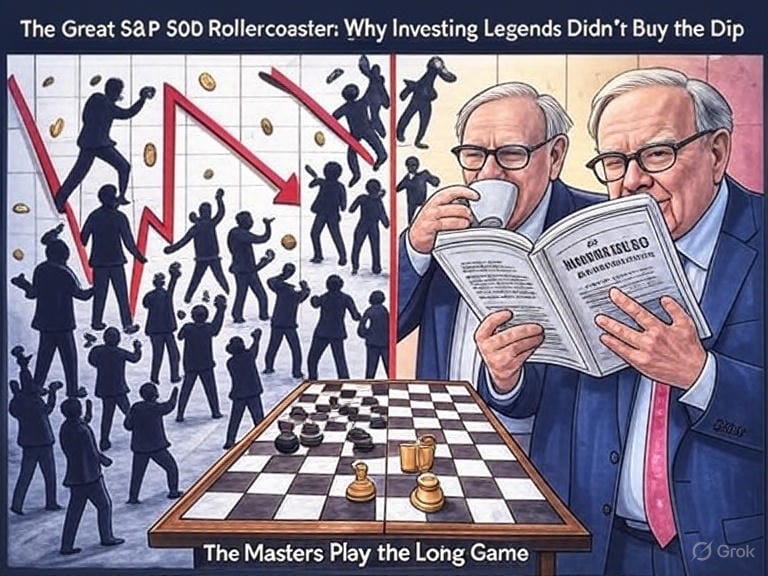The Great S&P 500 Rollercoaster: Why Investing Legends Didn’t Buy the Dip

What are the reasons for the inaction of both Warren Buffett and Ray Dalio during the market drop in February 2025? Are they not really the guru of investment?
The decision by renowned investors like Warren Buffett and Ray Dalio not to aggressively buy during the S&P 500's 20% decline (February–April) and subsequent rebound (to June 2025) likely reflects a combination of their long-term philosophies, market outlooks, and strategic constraints. Here are key reasons:
1. Valuation Concerns
- Even after a 20% drop, the market might not have met their strict valuation criteria. Buffett, for instance, prioritizes "margin of safety" and may have found few undervalued opportunities, especially if earnings forecasts were deteriorating.
- In 2022–2023, high inflation and rising interest rates compressed equity valuations, but certain sectors (e.g., tech) might still have been overpriced by their standards.
2. Macroeconomic Uncertainty
- Inflation/Interest Rates: Persistent inflation and aggressive Fed tightening could have deterred them. Dalio often emphasizes debt cycles and monetary policy risks—buying during volatility might have seemed premature if they expected further economic weakening.
- Recession Fears: A short-term bounce doesn’t negate structural risks. Buffett historically holds cash during uncertain times (e.g., 2008–2009) to wait for clearer bargains.
3. Portfolio Constraints
- Cash Levels: Buffett’s Berkshire Hathaway was already heavily invested pre-drop (e.g., buying Occidental Petroleum, Apple holdings). Deploying more cash might have required steeper discounts.
- Size Limitations: With billions to deploy, their moves are less about timing dips and more about finding large, high-conviction opportunities (e.g., Buffett’s 2016 Apple stake). The dip might not have offered scalable options.
4. Long-Term Discipline
- Both investors avoid market timing. Buffett famously said, "We don’t try to pick bottoms." They focus on multi-year horizons, not short-term rebounds.
- The rebound to June 2025 might have seemed too rapid, raising concerns about speculative froth (e.g., meme stocks, AI hype in 2023–2024).
5. Sector Preferences
- Buffett favors sectors like financials, energy, and consumer staples. If the rebound was tech-driven (e.g., AI rally), he might have stayed sidelined.
- Dalio’s "All Weather" strategy diversifies into non-equity assets (bonds, commodities), reducing reliance on stock market dips.
6. Alternative Opportunities
- Private markets or non-U.S. assets (e.g., Dalio’s China investments) might have offered better risk/reward profiles than U.S. equities during this period.
7. Psychological and Reputational Factors
- Acting against the crowd reinforces their contrarian branding. Missing a short-term bounce matters less than avoiding permanent capital loss (a core tenet for both).
Historical Context:
- In 2008–2009, Buffett waited until markets were deeply distressed to invest in Goldman Sachs and GE. Similarly, Dalio’s strategies prioritize hedging over bottom-fishing.
Conclusion:
Their inaction likely stemmed from a lack of alignment with their core principles—undervaluation, macroeconomic clarity, and scalable opportunities—rather than a failure to anticipate the rebound. For them, preserving capital during uncertainty often outweighs chasing rallies.